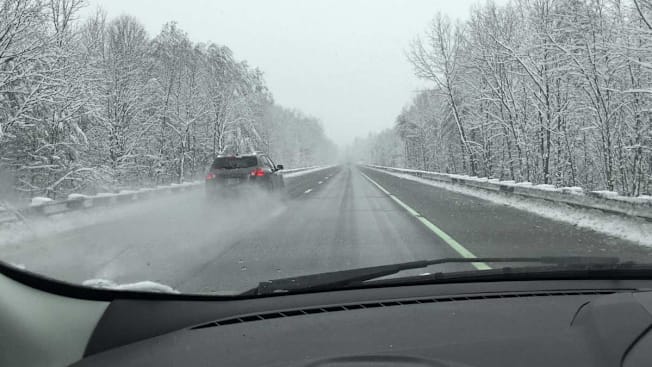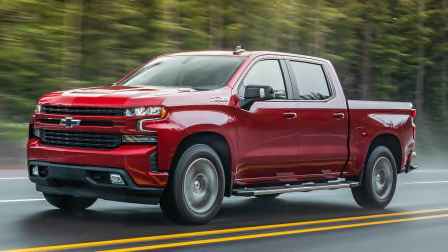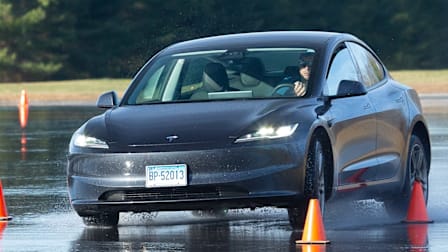Winter Driving Tips From Consumer Reports’ Experts
How to prepare your car and drive more safely in cold weather

Winter weather is hard on your vehicle and can make driving more dangerous. The Consumer Reports auto testers are all well acquainted with driving through the worst conditions that a New England winter can hurl at us.
The best way to stay ahead of plummeting temperatures and slippery roads is to make sure your car is properly prepared, and to reacquaint yourself with some basic winter driving skills. Read on to learn more.
Prepare Before Winter Arrives
Check the battery. A car’s 12-volt battery will have only about half the cranking power at 0° F that it has at 80° F. To make sure it’s healthy enough to work in the cold, you can have the battery tested at a service station, an auto parts store, or a repair shop. A tired battery may only need to be charged, but if it’s defective or old and just worn out, it’s best to replace it before it goes completely dead. (Check our car battery ratings and buying guide.) Worst case: Be sure you know how to jump-start a car.
Replace wiper blades. Even the best-performing wiper blades start to lose their effectiveness after one year. In especially tough climates, they can need replacing in as little as six months. Streaks or missed expanses of glass are sure signs that the blades are ready for retirement. Sometimes, you can stretch their life by cleaning the rubber edge of the blade periodically with a paper towel and glass cleaner, but it isn’t safe to do that all winter long. Instead, get a new set of blades before the old ones become a problem. We recommend replacing wiper blades at least once a year. Most wiper blades are easy to install, and some stores, such as Advance Auto Parts, will perform the replacement work free of charge, provided you buy the replacement inserts there.
Lubricate door locks. If you still use a key to get into your car, the lock cylinder can accumulate moisture and freeze during winter, locking you out. Use a silicone lubricant to clean the lock—most auto parts stores sell a special device that fits into the keyhole.
How to Drive in Winter Conditions
Plan ahead. Check the weather report before you drive anywhere, and plan your route. This way, you can avoid steep hills and places that are likely to be dangerous or congested when conditions deteriorate. Only drive in the snow if it’s completely necessary. Even if your car is equipped with winter tires and all-wheel drive, there’s still more risk than if the road is dry.
Accelerate slowly to reduce wheel spin. If you’re starting from a standstill on slick snow or ice, start in second gear if you have a manual transmission or gear-selectable automatic. This makes the vehicle less likely to spin the tires. Ease into the accelerator pedal—don’t mash it.
Reduce your speed and drive smoothly. The key to maintaining tire grip on slippery roads is to drive as smoothly as possible, avoiding sudden acceleration, braking, or sharp turns. Drive much more slowly than normal so that you have extra time to react. Try to accelerate, turn, and brake as separate actions rather than in combination, like you might in normal conditions. CR’s expert advice: Drive as if you have a full cup of coffee on the dashboard and don’t want it to spill.
Allow longer braking distances. Start braking sooner than you would in dry conditions to give yourself extra room when it’s slippery, using gentle pressure on the brake pedal. Don’t lock your wheels when braking, which can make the vehicle slide. If you have an older vehicle without an antilock braking system (ABS), you may need to gently apply the brakes repeatedly in a pulsing motion to avoid locking up the wheels. If your vehicle has ABS, simply depress the brake pedal firmly and hold it down. The shuddering sounds and pulsating pedal feeling are normal. Don’t lift off the brake. That’s just the system doing its job.
Steer into a slide. When your car’s rear end begins to slide during a turn, gently let up on the accelerator and turn the steering wheel in the direction that the car is sliding. This will help you straighten out. If your car is sliding straight ahead when you’re trying to make a turn, your initial reaction might be to keep turning the wheel. That could hurt more than help. Instead, lift gently off either the accelerator pedal or the brake and straighten the wheel, which gives your tires a chance to regain grip.
Don’t let all-wheel drive give you a false sense of security. Despite what many drivers think, vehicles with engine power at all four wheels can still slide on slick surfaces, especially when turning and braking. All-wheel-drive vehicles certainly have extra traction when accelerating, but there is no advantage while braking or cornering.
Be extra wary of other motorists. They may not be driving as cautiously as you, so leave extra space, avoid distractions, and be predictable. Signal clearly ahead of any turns or lane changes. If you feel you’re being pushed from behind by someone wanting to go faster, pull over and let them pass you.
Don’t pass the snow plows. Even though you may feel impatient, let these slow-moving trucks do their job. The road is likely more treacherous in front of the plows, and you run the risk of sliding in the deeper snow or slush in between the lanes as you accelerate to pass them. And don’t follow too closely—you might wind up with a cracked windshield from flying salt, sand, and pebbles.
Winter Considerations for EVs
Schedule preconditioning in advance. Cold weather is tough on electric vehicles, but you can mitigate its affect with a little planning. Preconditioning an EV will help heat the battery to an optimal operating temperature, which will extend your driving range and overall battery life. While the EV is plugged in and charging, either from the driver’s seat or via app, find the option to set a departure time or warm up the interior. In addition to using power from the charger—rather than the battery—preconditioning will bring the cabin to a more comfortable temperature for when it’s time to drive.
What to Do If You Get Stuck in Snow
Try to shovel out a path. With the front wheels straight, rock the car by shifting between Drive and Reverse and applying light throttle. Shift directions the second the wheels start spinning. Spread sand in your tracks. Once freed, keep going until you reach secure footing.
If the car isn’t moving, don’t spin the wheels. They’ll just dig deeper into the snow. You may need to jack up the car to put a traction aid under the drive wheels, but make sure the jack is on firm ground. You can use sand, cat litter, twigs, weeds, planks, and even your car’s floor mats or trunk liner. Make sure others stand clear before you apply power.





















